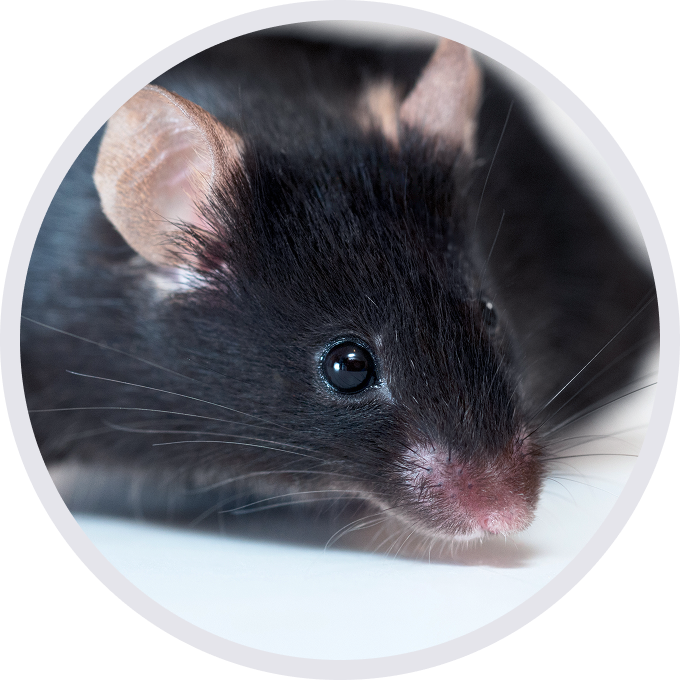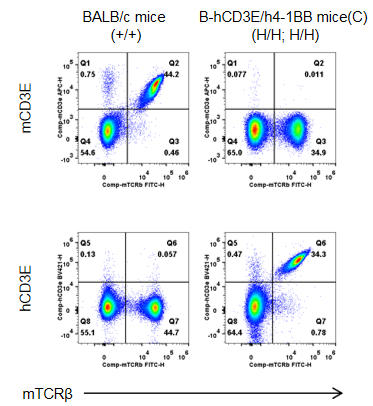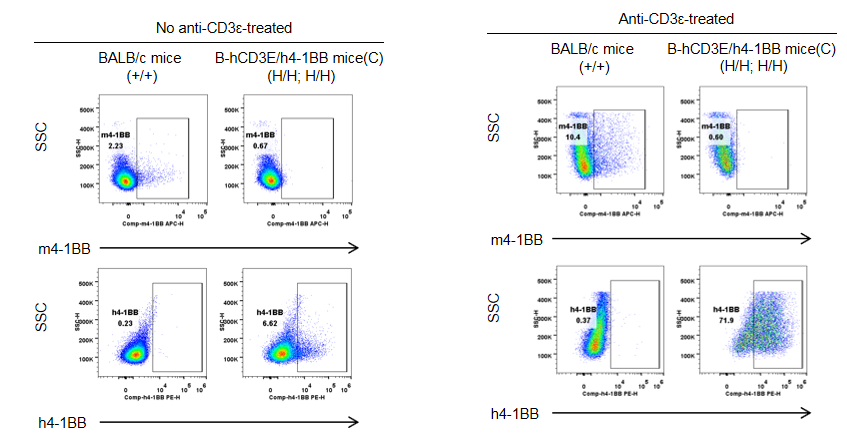Description
- The protein encoded by CD3E gene is the CD3-epsilon polypeptide, which together with CD3D, CD3G and CD3Z, and the T-cell receptor alpha/beta and gamma/delta heterodimers, forms the T-cell receptor-CD3 complex. CD3E is critical for normal formation and function of the TCR-CD3 complex and thus is a promising target for immune activity modulation.
- 4-1BB (also known as TNFRSF9) is a co-stimulatory molecule that is mainly expressed on the surface of T cells, NK cells and monocytes. 4-1BB is bound by its ligand 4-1BBL, leading to T cell activation, proliferation and cytokine production.
- B-hCD3E/h4-1BB mice(C) were obtained by mating B-hCD3E mice(C) (111876) and B-h4-1BB mice(C) (112652). The exons 2-6 of mouse Cd3e gene that encode the extracellular domain were replaced by human CD3E exons 2-7 in B-hCD3E/h4-1BB mice(C). The exons 2-7 of mouse 4-1bb gene that encode the extracellular domain were replaced by human 4-1BB exons 3-8 in B-hCD3E/h4-1BB mice(C).
- Mouse CD3E and 4-1BB were only detectable on T cells from spleen of wild-type BALB/c mice. Human CD3E and 4-1BB were only detectable on T cells from spleen of homozygous B-hCD3E/h4-1BB mice(C) but not in wild-type mice.
- This product is used for the pharmacological and safety evaluation of antibodies related to CD3/4-1BB.
Targeting strategy
Gene targeting strategy for B-hCD3E/h4-1BB mice(C).
The exons 2-6 of mouse Cd3e gene that encode the extracellular domain were replaced by human CD3E exons 2-7 in B-hCD3E/h4-1BB mice(C). The exons 2-7 of mouse 4-1bb gene that encode the extracellular domain were replaced by human 4-1BB exons 3-8 in B-hCD3E/h4-1BB mice(C).
Protein expression analysis in spleen
Strain specific CD3E expression analysis in wild-type BALB/c mice and homozygous humanized B-hCD3E/h4-1BB mice(C) by flow cytometry. Splenocytes were collected from wild-type BALB/c mice (+/+) and homozygous B-hCD3E/h4-1BB mice(C) (H/H; H/H), and analyzed by flow cytometry. Mouse CD3E was only detectable in wild-type BALB/c mice. Human CD3E was exclusively detectable in homozygous B-hCD3E/h4-1BB mice(C), but not in wild-type BALB/c mice.
Strain specific 4-1BB expression analysis in wild-type BALB/c mice and homozygous humanized B-hCD3E/h4-1BB mice(C) by flow cytometry. Splenocytes were collected from wild-type BALB/c mice (+/+) and homozygous B-hCD3E/h4-1BB mice(C) (H/H; H/H) stimulated with anti-CD3ε in vivo, and analyzed by flow cytometry. Mouse 4-1BB was only detectable in wild-type BALB/c mice. Human h4-1BB was exclusively detectable in homozygous B-hCD3E/h4-1BB mice(C), but not in wild-type BALB/c mice.
* When publishing results obtained using this animal model, please acknowledge the source as follows: The animal model [B-hCD3E/h4-1BB mice(C)] (Cat# 112903) was purchased from Biocytogen.


